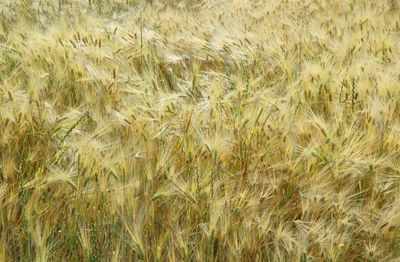What is Winter Rye Grass?
Winter rye is the most winter hardy of all the cereal grains. It tolerates temperatures down to -30 degrees F. (-34 C.) once established. It can germinate and grow in temps as low as 33 degrees F. (.5 C.). Winter rye should not be confused with ryegrass. Ryegrass is used for lawns, pasture, and hay for livestock, while winter rye is used as a cover crop, forage crop, or as a grain that is used to make flour, beer, some whiskey and vodkas, or can be eaten whole as boiled rye berries or rolled like rolled oats. Winter rye is closely related to barley and wheat, and is a member of the wheat family, Triticeae.
Why Should I Plant Winter Rye Grass?
Growing winter rye grass as a cover crop is an excellent choice. It’s inexpensive, readily available, easy to sow and grow, and easy to till under. It produces more dry matter in the spring than other cereal grains and its extended, deep roots have a beneficial effect on tilth. The prolific root system also enables winter rye to withstand drought better than other cereal grains. Winter rye cover crops also grow in low fertility soil better than other grains.
How to Grow Winter Rye Cover Crops
As mentioned, growing winter rye grass as a cover crop is quite simple. It thrives in well-draining loamy soil but is also tolerant of heavy clay or sandy soil. The preferred pH for growing winter rye is 5.0 to 7.0, but it is unfussy and will grow in the range of 4.5 to 8.0. Winter rye cover crops are sown in the late fall near the first light frost. To assure a good amount of groundcover to protect against winter soil erosion, a high seeding rate is used. Rake the garden smooth and broadcast 2 pounds (1 kg.) of seed per 1,000 square feet (100 sq. m.). Rake lightly to cover the seed and then water. Do not sow rye more than 2 inches (5 cm.) deep. Rye rarely needs any additional fertilizer, as it uptakes nitrogen in residual soil when it follows other crops that have been fertilized with nitrogen. As winter wanes and days lengthen, rye’s vegetative growth stops, and flowering is induced. If allowed to flower, rye can be slow to decompose. Therefore, it is better to cut it back and till it into the soil when it is between 6 and 12 inches (15-31 cm.) tall.
